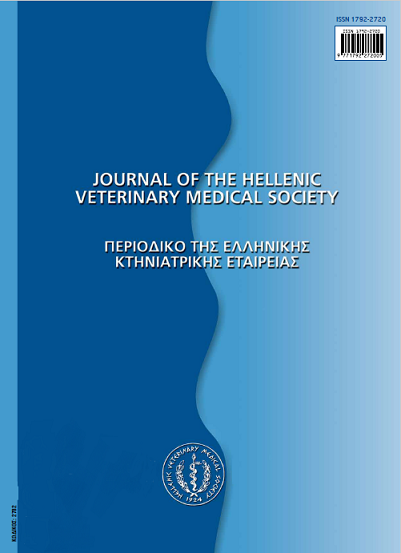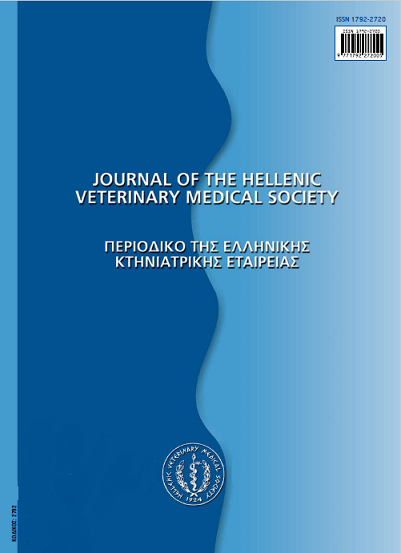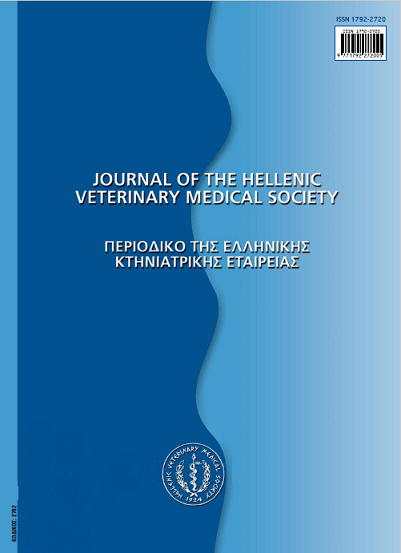Ο εμπλουτισμός του περιβάλλοντος στέγασης των ζώων εργαστηρίου στην πράξη

Περίληψη
Κατά τη διάρκεια των τελευταίων δεκαετιών έχει εκδηλωθεί έντονο ενδιαφέρον των επιστημόνων για τη βελτίωση της ευζωίας των ζώων εργαστηρίου μέσω του εμπλουτισμού του περιβάλλοντος στο οποίο διαβιούν. Ως εμπλουτισμός του περιβάλλοντος θεωρείται κάθε αλλαγή του περιβάλλοντος στέγασης των εγκλωβισμένων ζώων που αποσκοπεί στο να βοηθήσει τα ζώα αυτά να εκδηλώσουν συμπεριφορά παρόμοια με τη συμπεριφορά των ζώων του ίδιου είδους, που ζουν ελευθέρα στο φυσικό περιβάλλον. Ο εμπλουτισμός του περιβάλλοντος στέγασης των ζώων εργαστηρίου μπορεί να διακριθεί σε δυο τύπους, στον κοινωνικό εμπλουτισμό και στο φυσικό εμπλουτισμό. Ως κοινωνικός εμπλουτισμός χαρακτηρίζεται η δυνατότητα που μπορεί να προσφέρεται στα ζώα να έρχονται σε άμεση ή έμμεση επαφή με άλλα ζώα του ίδιου είδους και της ίδιας φυλής. Ο άμεσος κοινωνικός εμπλουτισμός περιλαμβάνει τη στέγαση των ζώων κατά ομάδες. Κατά τη σύσταση των ομάδων αυτών θα πρέπει να λαμβάνεται μέριμνα ώστε τα ζώα της ομάδας να ζουν αρμονικά μεταξύ τους και να μην εκδηλώνουν επιθετική ή ανταγωνιστική συμπεριφορά. Στις περιπτώσεις όπου δεν είναι δυνατή η στέγαση των ζώων σε ομάδες, τότε θα πρέπει να επιδιώκεται ηεφαρμογή του έμμεσου τύπου κοινωνικού εμπλουτισμού. Σ' αυτήν την περίπτωση τα ζώα έχουν τη δυνατότητα να βλέπουν ή να μυρίζουν άλλα ζώα του ίδιου είδους, τα οποία στεγάζονται σε παρακείμενα κλουβιά. Προκειμένου για τα μεσαία και τα μεγάλα ζώα εργαστηρίου ως κοινωνικός εμπλουτισμός θεωρείται και η συχνή επαφή του ανθρώπου με τα ζώα αυτά, ιδιαίτερα όταν παραμένουν για μεγάλο χρονικό διάστημα στην εγκατάσταση πειραματισμού. Ως φυσικός εμπλουτισμός θεωρείται κάθε παρέμβαση που μπορεί να γίνει στο περιβάλλον στέγασης, με σκοπό την ικανοποίηση διαφόρων φυσιολογικών και ηθολογικών αναγκών των στεγαζόμενων ζώων, όπως για παράδειγμα η άσκηση, η κατασκευή φωλιάς, το ψάξιμο της τροφής ή η εξερεύνηση του περιβάλλοντος χώρου. Ο φυσικός εμπλουτισμός του περιβάλλοντος στέγασης των ζώων εργαστηρίου περιλαμβάνει συνήθως την τοποθέτηση διαφόρων αντικειμένων ή υλικών ή τη δημιουργία διαφόρων ερεθισμάτων. Στην πράξη, ο εμπλουτισμός του περιβάλλοντος στέγασης των ζώων εργαστηρίου θα πρέπει να γίνεται σε συνεργασία με το επιστημονικό και τεχνικό προσωπικό της εγκατάστασης. Πριν από την εφαρμογή οποιουδήποτε προγράμματος εμπλουτισμού θα πρέπει να προηγείται συστηματική μελέτητης υπάρχουσας σχετικής βιβλιογραφίας, ανταλλαγή απόψεων και εμπειριών με άλλες μονάδες εκτροφής ή και πειραματισμού, προσεκτικός σχεδιασμός και αξιολόγηση των παρεμβάσεων προκειμένου να διασφαλίζεται ότι οποιαδήποτε μεταβολή του περιβάλλοντος στέγασης θα αποβαίνει τελικά προς όφελος της υγείας και ευζωίας των στεγαζόμενων ζώων, αλλά και προς όφελος της ποιότητας των αποτελεσμάτων της επιτελούμενης έρευνας.
Λεπτομέρειες άρθρου
- Πώς να δημιουργήσετε Αναφορές
-
KOSTOMITSOPOULOS (Ν. ΚΩΣΤΟΜΗΤΣΟΠΟΥΛΟΣ) N. (2017). Ο εμπλουτισμός του περιβάλλοντος στέγασης των ζώων εργαστηρίου στην πράξη. Περιοδικό της Ελληνικής Κτηνιατρικής Εταιρείας, 60(3), 222–226. https://doi.org/10.12681/jhvms.14929
- Τεύχος
- Τόμ. 60 Αρ. 3 (2009)
- Ενότητα
- Special Article
Οι συγγραφείς των άρθρων που δημοσιεύονται στο περιοδικό διατηρούν τα δικαιώματα πνευματικής ιδιοκτησίας επί των άρθρων τους, δίνοντας στο περιοδικό το δικαίωμα της πρώτης δημοσίευσης.
Άρθρα που δημοσιεύονται στο περιοδικό διατίθενται με άδεια Creative Commons 4.0 Non Commercial και σύμφωνα με την άδεια μπορούν να χρησιμοποιούνται ελεύθερα, με αναφορά στο/στη συγγραφέα και στην πρώτη δημοσίευση για μη κερδοσκοπικούς σκοπούς.
Οι συγγραφείς μπορούν να καταθέσουν το άρθρο σε ιδρυματικό ή άλλο αποθετήριο ή/και να το δημοσιεύσουν σε άλλη έκδοση, με υποχρεωτική την αναφορά πρώτης δημοσίευσης στο J Hellenic Vet Med Soc
Οι συγγραφείς ενθαρρύνονται να καταθέσουν σε αποθετήριο ή να δημοσιεύσουν την εργασία τους στο διαδίκτυο πριν ή κατά τη διαδικασία υποβολής και αξιολόγησής της.







